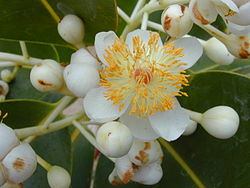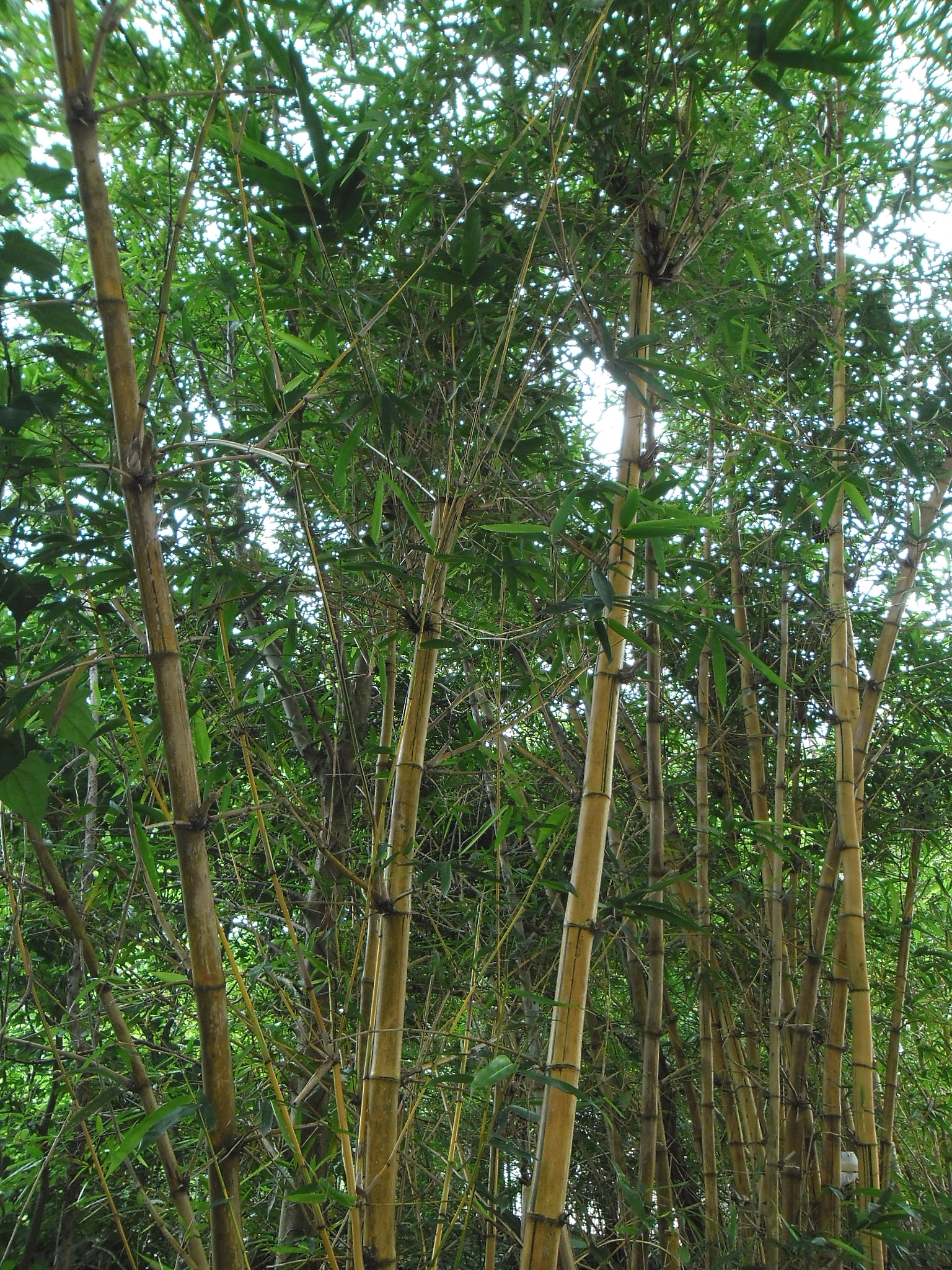User talk:Justmine88
Herbs[edit]
The English word "herb" (pronounced /ˈɜːrbs/ by some U.S. speakers, or /ˈhɜːrbs/ by other U.S)[1] is derived from the Sanskrit word "bharb", which means to eat. It also originates from the Latin word "herba" meaning grass or fodder. Herbs have been used as medicines for centuries. They were kept in dried form in many pharmacies so that they could be used all year. This is why the word "drug" is from the Anglo-Saxon word "drigan" which means to dry.[2]
It has numerous different meaning depending on a few perspectives.
- In horticultural terms - herb refers to "herbaceous," which describes the appearance of the plant (i.e: a non-woody, vascular plant)
- In taxonomic terms - herb generally refers to the above ground parts or the aerial parts (i.e., the flower, leaf, and stem).
- In terms of herbal medicine - herb refers to plants used in various forms or preparations, valued for their therapeutic benefits
The herb Binomial nomenclature[edit]
Binomial Nomaenclature is a formal system of naming species of living things consist of two-part scientific Latin name used to identify plants.
- The first name is the genus and is a general name that may be shared by a number of related plants.
- The second is the species name, which refers to the name that is specific to that individual plant (i.e.Echinacea purpurea, Echinacea angustifolia).[3]
Medicinal Herbs In Brunei Darussalam[edit]
Brunei Darussalam is situated on the northwest coast of the island of Borneo.It is bordered by the South China Sea in the north and on all other sides by the Malaysian state of Sarawak.The total land area of Brunei is about 5,770 square kilometers.The country has large areas of natural forests covering more than 80% of the land area. These forests are the source of many valuable species of medicinal herbal plants for instance, Bambusa vulgaris , Selaginella doederleinii hieron, Styphelia Malayana, Calophyllum inophyllum L
Calophyllum inophyllum L[edit]
Template:Good article is only for Wikipedia:Good articles.
| Calophyllum inophyllum L | |
|---|---|
 Calophyllum inophyllum flower | |
| Alternative names | Alexandrian laurel,Indian Poon,Bintagor laut (Malay- Brunei),calophylle faux tacamahac (French) |
Common names:
- From Greek , kalos = beautiful
- phullon = leaf
- Alexandrian laurel,Indian Poon,Penaga laut (Malay - Malaysia),bintagor laut (Malay- Brunei),calophylle faux tacamahac (French)[4][5]
Description[edit]
Low-branching and slow-growing tree with a broad and irregular crown. The bark outside is rough, crackly and sometimes, with shallow longitudinal grooves, dark brown to blackish.The leaves are blade elliptic, oval and generally cuneate at the base and rounded. The flowers have 8 to 13 tepals , that is the parts cannot be distinguished as being either sepals or petals ,showy fragrant with numerous yellow stamens.The fruits are in small bunches, float on water, and there is only one seed for each fruit. Seeds and cuttings can propagate it.
Distribution and habitat[edit]
It is indigenous in South East Asia to tropical coast, in the Pacific,Polynesian Islands,India to East Africa, northern Australia, central and northern Queensland.
C. inophyllum is often common in seashore/sandy beaches but is sometimes found inlay on sandy soils up to 200 m altitude and tolerant to salt. It prefers partial shade or partial sun to full sun and soil should be wet.
Uses[edit]
Aside from being used in construction or boat-building, the tree produces Tamanu oils, the so called “Sacred oil of Ancient Tahitian”.
The oil is a potent healing agent, thereby accelerating wound healing and growth of the healthy skin and ideal for general skin and cosmetic purposes to cure scrapes, burns, acne and scars,psoriasis, eczema and also used to relieve neuralgia, rheumatism and sciatica.
During World War II the oil was used for night lamps due to existence of fatty acid methyl ester and it creates therapeutic and relaxing aroma.
It was also used as fuel to generate electricity to provide power for radios before the widespread use to decline when kerosene became available, and later on electricity.
Bambusa Vulgaris[edit]

Common names
aur beting (Malay-Malaysia), aur gading (Malay-Malaysia), bambou (French),Buloh kuning (Malay – Brunei), patung (Philippines), phai cheen (Thailand)
Description[edit]
Although Bambusa vulgaris is taxonomically a grass, its habit is tree-like. It forms dense stands of cylindrical, jointed woody yellow-coloured with few longitudinal green stripes stems up to 20m in height and 4-10cm in diameter;
Leafy branches at nodes, with narrow lanceolate leaves up to 30cm long.
It flower infrequently and can be propagated from rhizome – cuttings with attached culms.[6]
Distribution and Habitat[edit]
Occurs spontaneously or naturalised mostly on riverbanks, road sides, wastelands and open ground; generally at low altitudes.
In cultivation it thrives best under humid conditions up to 1000m altitude, but tolerates unfavourable conditions as well:
dry season (plants may become completely defoliated);
low temperature (grows up to 1200m altitude, survives -3 degrees C);
also tolerates a wide range of soil types.
Bambusa vulgaris also can be found in front of Faculty of Science in University of Brunei Darussalam.
Uses[edit]
The decoction of the finer roots and the yellow – coloured rasping of the stem consumed to treat jaundice, a disease known locally as “penyakit kuning”. Its leaves are used as part of measles treatment and infusion of macerated leaves is consumed against sexually transmitted diseases.[7]. Meanwhile, tab sheer from culms internodes to treat infantile epilepsy and bark astringent planted as ornamental marker and for erosion control. It is also used as raw materials for paper pulp due to the exceptional tear strength and widely used in fencing and construction field
Selaginella doederleinii hieron[edit]
Common names : Shi shang bai (Romanized Chinese) ,Cakar Ayam (Malay- Malaysia), Kukuran Bini (Malay-Brunei)
Description[edit]
A rhizomatous spreading club moss up to 20 cm tall, with roots at their nodes. Fronds near-upright and pendulous toward the tops, trip innate with dome-shaped outline, to 10 cm across, green above and grayish green underneath : leaflets in 4 rows, inner in 2 rows, overlapping and closely attached, outer 2 rows, arranged at the right angle to the stem; pinnate alternate and spaced.
Distribution and Habitat[edit]
Occasionally found growing in patches on the floor of lowland forest in Labi area. It thrives on damp, sandy loam with organic litter. Strobili formed matured fronds. It can be domesticated and is normally propagated by dividing the rhizomes.
Uses[edit]
This plant contains alkaloids, saponins, and phytosterol. Etanolik extracts contain components lignans,fenilpropanonandbiflavonoid and it is efficacious to eliminate hot and humid, blood flow, antineoplasma, stop bleeding(hemostatis) and eliminate swelling. In addition, Selaginella efficacious for treating nasopharynx cancer, lung cancer, respiratory infections, bronchitis, tonsillitis, cough, hoarse, ulceration, hepatitis, abdominal edema,acute urinary tract infections, broken bones (fractures), and rheumatic.[8]
References[edit]
- ^ Cambridge Advanced Learners' Dictionary & Thesaurus, Cambridge University Press: headword "Herb" Online version
- ^ Medicinal Herbs Homepage[1]
- ^ American Botanical Council[2]
- ^ Jatropha Plant[3]
- ^ United States Department of Agriculture[4]
- ^ Global Invasive Species Database[5]
- ^ Anon.,(2000),Medicinal Plants of Brunei Darussalam,Bandar Seri Begawan, Department of Agriculture,Brunei Darussalam
- ^ Wiart.C,(2000),Medicinal Plants of Southeast Asia,Pelanduk Publisher,Kuala Lumpur,100pp
